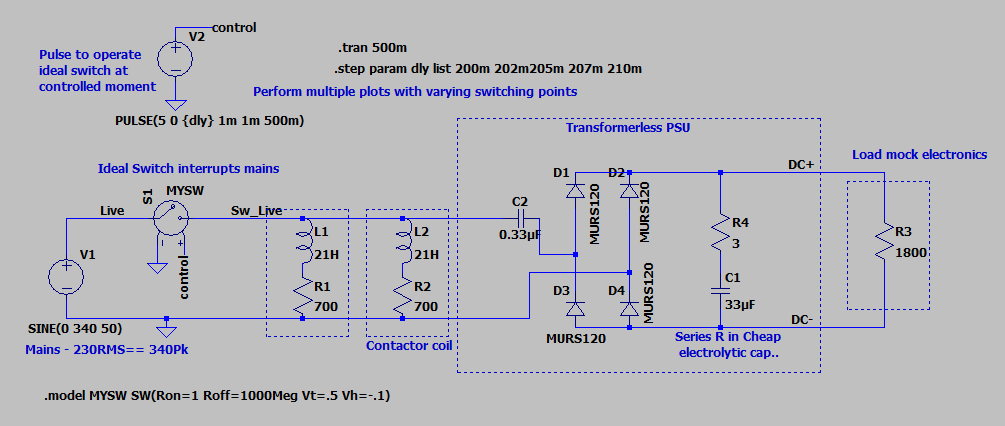I have just changed a timer for an underfloor heating rig for the second time in less than 12 months. As far as I can tell it has hardly been used - but like all things MAPJ1 there is a twist.
To save the thermostat (rated at '16A' and a very feeble looking relay) the heating of about 20A is switched by a couple of relays, and they in turn are operated by that thermostat. but the supply they switch comes from a pair of changeover contactors that switch between Daytime and Economy 7 power, depending on the press of a 'day boost' over-run timer.
The contactors are Garo 20A units and work seamlessly, and the thermostat and the two relays have been faultless - but the over-run timer has now failed twice, both times when the day time power has been switched off.
My unproven suspiscion is that this occurs when the contactor coils lose supply, but the heating resistance is not in parallel due to a satisifed thermostat.
Now I have heard figures of an inductance of 20 henry in series with a few hundred ohms for single module contactors, but I have not yet measured these units to see how true this is.
If so the kick from the contactors when supply is removed may be quite noticable, (stopping ~ 40mA each though a pair of 20H inductor I think is 33mili joules. ) but is it enough, really, to break an electronic timer.?
It does not feel quite right.
Has anyone else seen commercial grade electronics in the vicinity of a contactor fail suddenly when the supply stops, or analysed the back EMF kick back from contactors to see if that anecdotal figure is way off beam ?
Mike.
(yes I'm going to add a transorb anyway - I'd just like a warm feeling it was perhaps going to do some good.)


